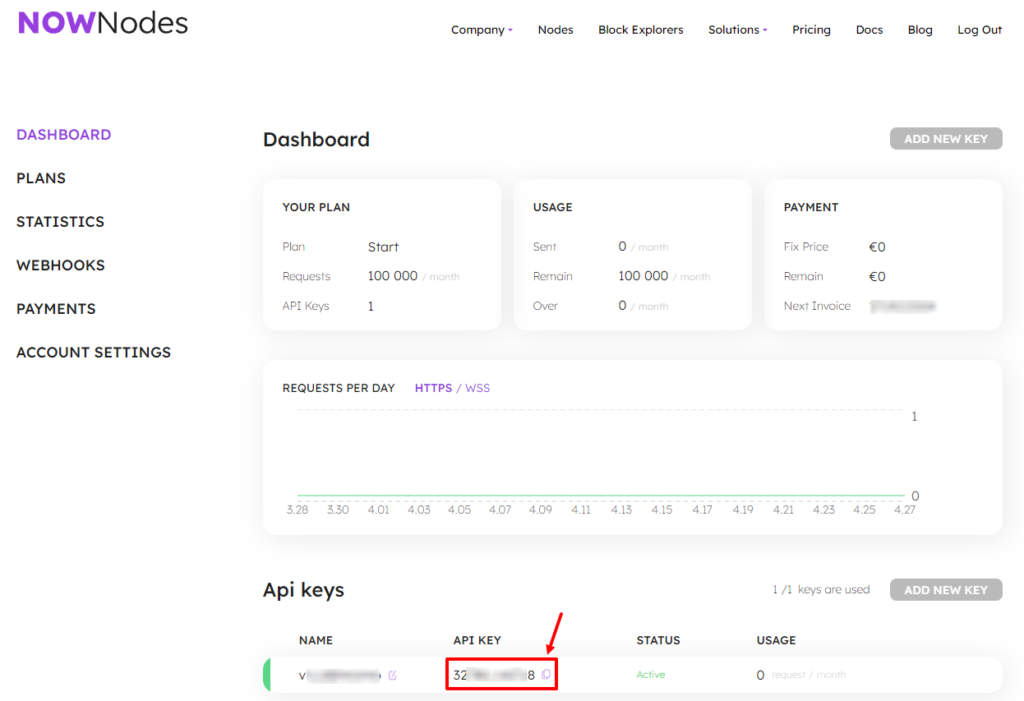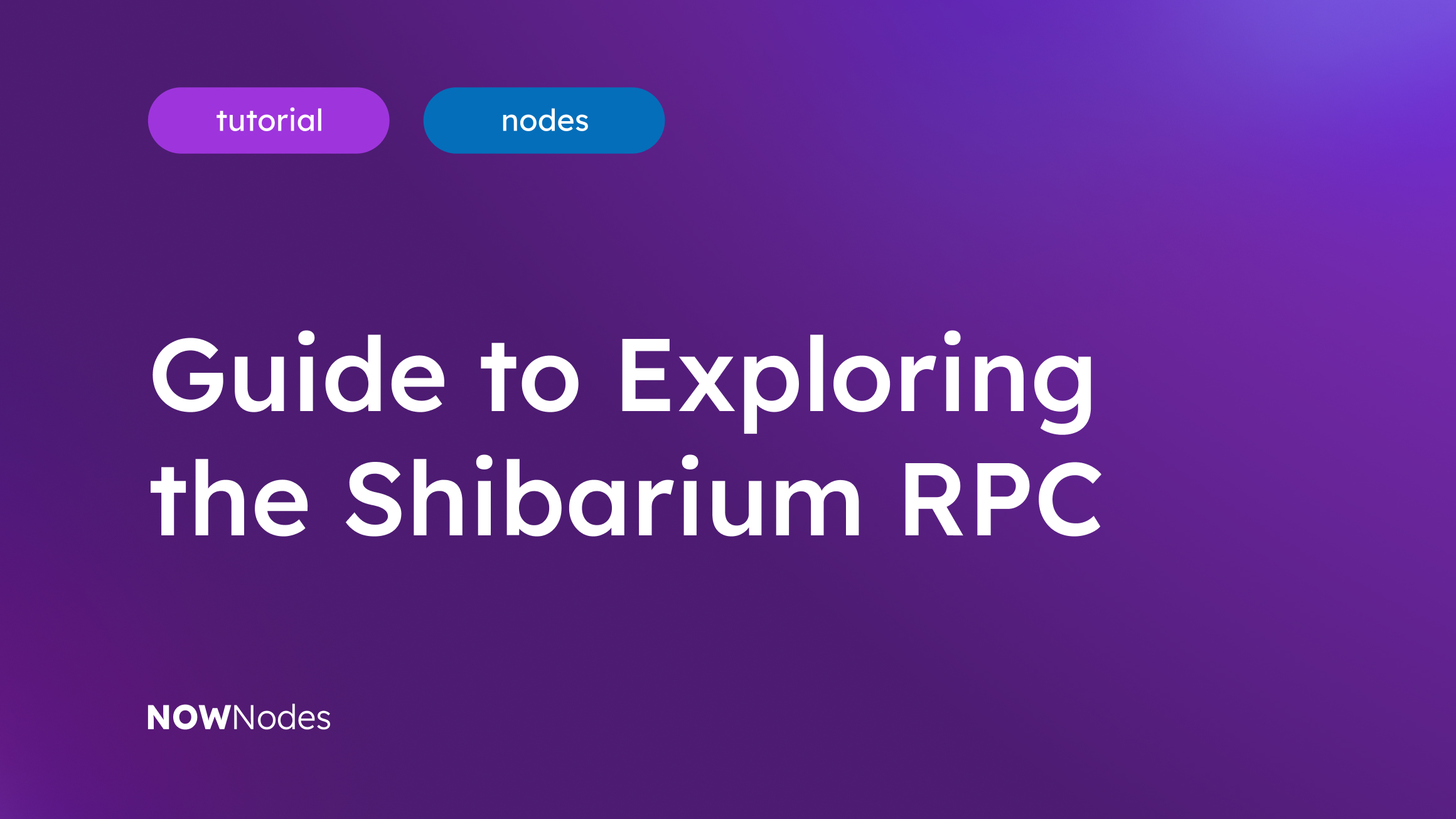Introduction to Web3 Development
In the world of blockchain technology, Web3 development has emerged as a revolutionary approach to building decentralized applications (dApps) and smart contracts. Unlike traditional web development, Web3 development leverages the power of blockchain networks to create trustless, transparent, and secure applications.
One of the key components of Web3 development is to stay up to date and explore the best upcoming features, such as the Shibarium RPC, which plays a vital role in facilitating communication between applications and the Shibarium network today. In this comprehensive guide, we will delve deep into the world of Shibarium RPC and explore its potential for Web3 development.
First of all, let us look closely at a mainnet for Web3 development. It is a crucial tool if you want to understand how to build, test, and deploy decentralized applications. Here’s a list of steps to start with the Web 3 development:
1. Understand the Basics:
- Blockchain Basics: Understand the fundamental concepts like blocks, transactions, consensus algorithms, and smart contracts.
- Ethereum & Smart Contracts: Given that Ethereum is the leading platform for Web3 development, familiarise yourself with Ethereum’s architecture and how smart contracts work on it. Since Shibarium is compatible with Ethereum, you’d be using the Solidity language for contract development.
- Web3: Web3 is a set of protocols and technologies which stands at the core of decentralized applications. Get comfortable with the Web3.js or ethers.js library.
2. Set Up Development Environment:
- Node & Package Manager: Ensure you have Node.js and npm/yarn installed.
- MetaMask: Install the MetaMask browser extension. This will be your primary way to interact with dApps and mainnet.
- IDE: Use an IDE like Visual Studio Code with extensions for Solidity to aid in development.
- Truffle or Hardhat: These are popular development frameworks for Ethereum that help in compiling, testing, and deploying smart contracts.
3. Connect to Mainnet:
Registration:
Start by visiting the NOWNodes website and sign up for an account. This involves verifying your email address and choosing a tariff plan (with an opportunity to pick up a free FREE plan with access to 5 blockchains and one API key).
API Key Generation:
Once registered, you’ll have the ability to generate your unique API key. This key is your passport to making API calls to the RPC nodes you’ve chosen.

Once you’ve got your API key, find the docs page and explore the API call methods. Utilize the provided endpoints to send API requests.
NOWNodes provides limitless opportunities to build on Shibarium: with no rate limits we help dApps, CEXes and DEXes make Shibarium ecosystem multichain.
4. Interacting with Mainnet:
- Smart Contract Interaction: Use Web3.js or ethers.js to interact with already deployed contracts on the mainnet. This can involve reading data from contracts or invoking contract functions.
- Transactions & Gas: Understand how transactions work on mainnet. Learn about gas, how to estimate gas, and optimise transaction costs.
- Token Standards: Familiarise yourself with popular standards like ERC-20 (fungible tokens) and ERC-721 (non-fungible tokens or NFTs) on Shibarium to interact with token contracts on mainnet.
5. Deployment on Mainnet:
- Caution: Always test your contracts on testnets before deploying on the mainnet to avoid loss of funds.
- Gas Fees: Mainnet deployments and transactions cost gas. Monitor the Shibarium gas fees and choose an optimal time for deployments, however they’re usually lowers than the Ethereum ones.
6. Monitoring & Tools:
- Shibarium Scan: Use Shibarium Scan to monitor transactions, contracts, and addresses on the mainnet.
- Analytics Tools: Dune Analytics or TheGraph can be used to query and understand blockchain data for your dApp.
- Security: Ensure your contracts are audited and secure before mainnet deployment. Tools like Mythril or Slither can help analyse contracts for vulnerabilities.
7. Stay Updated:
- EIPs: Ethereum Improvement Proposals (EIPs) can bring changes to the network. Stay updated with the latest proposals and their implications.
- Updates & Hard Forks: Be aware of any planned network upgrades or hard forks which might affect your dApp’s functionality.
8. Join the Community:
- Engage in Ethereum and Web3 forums, GitHub repositories, Discord servers, and other platforms to stay updated, seek help, and discuss with fellow developers.
Remember, working on the mainnet requires caution and thorough testing, as mistakes on Mainnet can lead to irreversible loss of funds or compromised contract functionality. Always prioritise security and best practices in your Web3 development journey.
Understanding Shibarium RPC and its Role in Web3 Development
Shibarium RPC, also known as Remote Procedure Call, is a protocol used by developers to interact with the Shibarium blockchain. It acts as a bridge between the developer’s application and the Shibarium network, allowing them to send requests and receive responses. By utilizing Shibarium RPC, developers can access various features and functionalities of the Shibarium network, such as retrieving blockchain data, creating transactions, and deploying smart contracts.
To harness the full potential of Web3 development, it is crucial to understand the role of Shibarium RPC. With Shibarium RPC, developers can build decentralised applications that are not only secure and transparent but also scalable and interoperable. Moreover, Shibarium RPC provides developers with a standardised way to interact with the Shibarium network, ensuring compatibility across different platforms and tools.
Setting up a Shibarium Node
Before diving into Shibarium RPC, it is essential to set up a Shibarium node. A Shibarium node serves as a gateway to the Shibarium network, allowing developers to connect their applications to the blockchain. Setting up a Shibarium node involves installing the necessary software and configuring the node to synchronise with the Shibarium network.
Instead of setting up your own Shibarium node you always can rely on the node provider NOWNodes. The easy steps to access the Shibarium node are mentioned above in the Connecting to Mainnet chapter.
If you would like to set up your own Shibarium node, start by downloading the Shibarium client software from the official Shibarium website. Once downloaded, follow the installation instructions provided by the Shibarium team. After the installation is complete, configure the node by specifying the network settings, such as the Shibarium mainnet or testnet.
Once your Shibarium node is up and running, you can start exploring the features and functionalities offered by Shibarium RPC.
Exploring the Features of Shibarium Mainnet
Shibarium Mainnet is the live version of the Shibarium blockchain network. It is the production environment where real transactions and smart contracts are executed. Exploring the features of Shibarium Mainnet allows developers to gain firsthand experience of working with a live blockchain network and understand its nuances.
With Shibarium RPC, developers can interact with Shibarium Mainnet and access a wide range of features. They can retrieve real-time blockchain data, such as the latest blocks, transactions, and account balances. Additionally, developers can create and sign transactions, deploy smart contracts, and execute function calls on the Shibarium Mainnet.
By exploring the features of Shibarium Mainnet, developers can gain valuable insights into the capabilities of the Shibarium network and unlock new possibilities for their Web3 development projects.
Shibarium RPC Documentation and Resources
To assist developers in their journey with Shibarium RPC, the Shibarium team provides comprehensive documentation and resources. The Shibarium RPC documentation offers detailed information about the various RPC methods supported by Shibarium, along with their parameters and return values.
In addition to the documentation, the Shibarium team also maintains a vibrant online community where developers can seek help, share their experiences, and stay updated with the latest news and developments. The community forums and social media channels provide a platform for developers to connect with like-minded individuals and collaborate on Web3 development projects.
By leveraging the Shibarium RPC documentation and resources, developers can enhance their understanding of Shibarium RPC and stay updated with the latest best practices and techniques.
You can access Shibarium RPC documentation in our official Docs.
Latest News and Updates on Shibarium Development
As the Shibarium ecosystem continues to evolve, it is essential for developers to stay informed about the latest news and updates. The Shibarium team regularly releases updates and enhancements to the network, which can have a significant impact on Web3 development projects.
By staying updated with the latest news and developments, developers can leverage new features, optimise their applications, and adapt to any changes in the Shibarium network. Additionally, being aware of upcoming releases and improvements can help developers plan their Web3 development roadmap and explore new possibilities for their projects.
To stay updated with the latest news and updates on Shibarium development, developers can subscribe to the Shibarium newsletter, follow the official Shibarium social media accounts, and join the Shibarium community forums.
Best Practices for Working with Shibarium RPC
To ensure the smooth development and deployment of Web3 applications, it is crucial to follow best practices when working with Shibarium RPC. Here are some key best practices to keep in mind:
- Error Handling: Always handle errors and exceptions when making RPC calls to the Shibarium network. Proper error handling ensures that your application can gracefully recover from failures and provide meaningful feedback to users.
- Security Considerations: When interacting with Shibarium RPC, pay attention to security considerations. Use secure connections (HTTPS) when making RPC calls and implement proper authentication and authorization mechanisms to protect sensitive data.
- Optimised Queries: Optimise your RPC queries to minimise the impact on the network and improve the performance of your application. Use pagination and filtering techniques to retrieve only the necessary data and avoid unnecessary network congestion.
- Testing and Debugging: Thoroughly test and debug your application’s integration with Shibarium RPC. Use tools like unit tests, debuggers, and logging frameworks to identify and resolve any issues or bugs in your code.
By following these best practices, developers can ensure the reliability, security, and efficiency of their Web3 applications built on top of Shibarium RPC.
Leveraging Shibarium RPC for Shiba Inu Projects
Shiba Inu, a popular meme-based cryptocurrency, has gained significant traction in the blockchain community. Developers working on Shiba Inu projects can leverage Shibarium RPC to interact with the Shiba Inu Mainnet and build innovative applications.
By integrating Shibarium RPC into Shiba Inu projects, developers can access real-time data, execute transactions, and interact with smart contracts on the Shiba Inu Mainnet. This opens up a world of possibilities for developing decentralised exchanges, gaming platforms, NFT marketplaces, and much more.
With Shibarium RPC, developers can tap into the potential of Shiba Inu and create unique experiences for the Shiba Inu community.
Conclusion
Web3 development has revolutionised the way we build applications, offering unprecedented levels of transparency, security, and decentralisation. Shibarium RPC plays a crucial role in Web3 development, enabling developers to connect their applications with the Shibarium network and unlock its full potential.
In this comprehensive guide, we explored the world of Shibarium RPC and its significance for Web3 development. We discussed the process of setting up a Shibarium node, explored the features of Shibarium Mainnet, and learned how to leverage the Shiba API for Web3 development. We also highlighted the importance of Shibarium RPC documentation, staying updated with the latest news, following best practices, and leveraging Shibarium RPC for Shiba Inu projects.
With this knowledge in hand, developers can embark on their Web3 development journey with confidence, unleashing the true potential of blockchain technology and creating groundbreaking applications on the Shibarium network.
Ready to dive into Web3 development with Shibarium RPC? Start building your decentralized applications today and be part of the blockchain revolution!



